There’s always been a minor niggle at the back of my mind when I played the Nintendo DS. “They’ve got it backwards,” I thought, “The A button should be on the left and B on the right. That’s how it’s always been… I think.” A speedy investigation showed that my memory was a little foggy, and that the answer was significantly more interesting than that. Therefore, I present to you a brief history of gamepad button mapping.
Nintendo: BA for Life
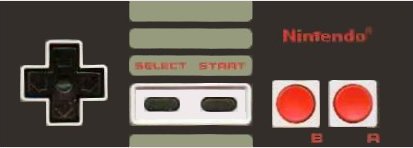
The NES was the first console to move away from the joysticks of the Atari generation, opting instead for what would become an iconic design in gamepads. Despite my previous complaint, note that A is indeed mapped to the right of B. D’oh!
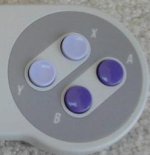
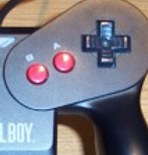
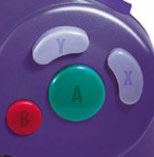
Following their ancestor’s example, nearly every Nintendo console is mapped this way. This includes the SNES, Virtual Boy, Gamecube, every iteration of the Game Boy, DS and Wii Classic Controller. The only dissenters are the Nintendo 64 (bottom right picture), which maps B in a location traditionally reserved for Y, and the Wiimote, which maps A and B on different surfaces entirely.
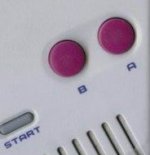
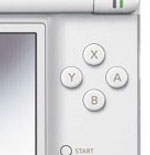
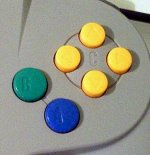
Sega & Microsoft Love AB
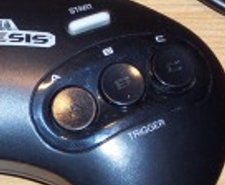
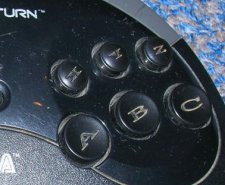
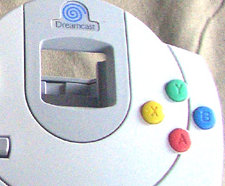
In the early days, Sega was hot on Nintendo’s heels. The NES had A and B buttons, so the Genesis added a C *. When the SNES added the X and Y buttons, Sega one-upped them by adding a Z to the Saturn. The Dreamcast controller was more minimal, perhaps inspired by Sony’s popular newcomer, the Playstation. The one element that all Sega controllers share is the AB orientation (the Game Gear labelled them 1 and 2, but arranged them in the same way.)
* It’s worth noting that the short-lived Atari Jaguar had A, B and C buttons oriented the opposite way. It also featured a full numeric pad, for a grand total of 17 individual buttons!

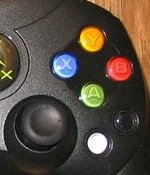
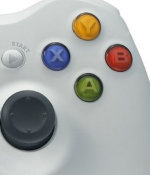
The first iteration of the Xbox controller, nicknamed “Duke”, was bulky and unpleasant to hold. The four main buttons were on a strange slant, putting the B almost directly above A. Fortunately, Microsoft quickly responded to public criticism and began packaging the Japan-exclusive “S” controller with their system. The new gamepad was smaller and straightened out the button layout, a mapping they largely reused for the Xbox 360.
Sony Goes Both Ways
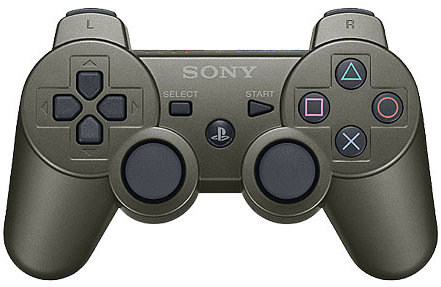
The main buttons on the Playstation gamepad don’t use letters, but are instead labelled  ,
,  ,
,  and
and  . The original Playstation saw three types of controllers over its lifetime, adding dual analog sticks in 1997 and rumble in 1999. In recent years the DualShock line has seen slow incremental improvements, but they haven’t strayed far from the original design (mercifully they abandoned the boomerang concept.)
. The original Playstation saw three types of controllers over its lifetime, adding dual analog sticks in 1997 and rumble in 1999. In recent years the DualShock line has seen slow incremental improvements, but they haven’t strayed far from the original design (mercifully they abandoned the boomerang concept.)
In North America and Europe, games commonly use  to confirm (the role of A) and
to confirm (the role of A) and  to cancel (the role of B.) In Japan, however, the
to cancel (the role of B.) In Japan, however, the  symbol is commonly associated with maru (right) while
symbol is commonly associated with maru (right) while  is identified with batsu (wrong.) Therefore the roles are reversed,
is identified with batsu (wrong.) Therefore the roles are reversed,  confirms and
confirms and  cancels. While the controls of most games are localized with this in mind, games such as Final Fantasy VII and Metal Gear Solid were left with their original mapping (to the general confusion of Western players.)
cancels. While the controls of most games are localized with this in mind, games such as Final Fantasy VII and Metal Gear Solid were left with their original mapping (to the general confusion of Western players.)
I hope this has been an enlightening trip down memory lane. With all the variety in gamepad mapping, it should come as no surprise that even veteran gamers can be betrayed by their muscle memory sometimes.






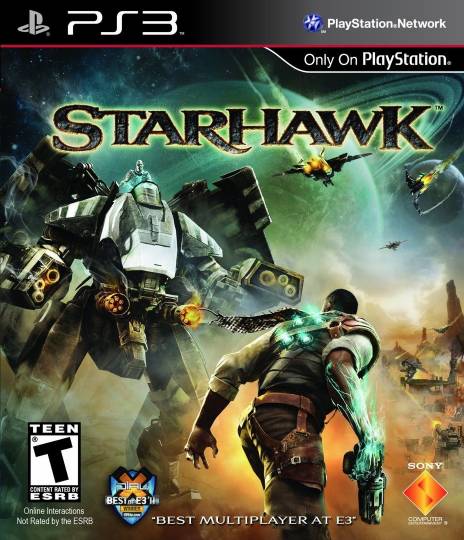
September 16th, 2008 at 2:54 am
How did the whole A/B thing get started? Was Nintendo the first to use the labels? I guess arcade games had the specific functionality labelled instead of generic labels. What about other early systems?
September 16th, 2008 at 2:58 am
Wow! What an amazing survey of controllers, Matt.
Isn’t it funny how much gamers have forgiven Microsoft for such a bad mistake as the Duke controller – it really did make the console unplayable for myself, and a boat load of others.
Also, if you think about it, it’s mostly been the Japanese Nintendo (and if we think of the O, X Japanese reversal on the PS as an A B reversal, then them too) that has been proponents of the right to left button configuration… interesting, and maybe a tiny bit revealing about their culture and way of thinking. Fascinating.
September 16th, 2008 at 8:25 am
I remember seeing a post on a message board where some joker purported that the xbox was superior because the buttons were in alphabetical order. Thats no joke either, the dude was serious as a heart attack.
Anyway, I always thought that the Nintendo layout was B A because A is closer to your right thumb, and thus the primary number. That makes sense to me. But I guess it could also just be that the console comes from a right to left reading country of origin. Who knows.
What I do know is, B is back and A is accept. I always fiddled when I was trying to navigate menus on the PS consoles.
September 16th, 2008 at 7:38 am
I actually preferred the big “Duke” X-Box controller. But I have big hands.
September 16th, 2008 at 1:19 pm
@Andrew: Good question! I did some casual research. Most joysticks of the Atari generation had either one or two unlabeled buttons, or a full numeric pad. The earliest instance I can find of labels is the Vectrex, which had buttons 1, 2, 3 and 4. It’s therefore very likely that the NES was the first console to use letter button labels.
@Ben: As Skrud’s comment demonstrates, some people really liked the larger controller. Apparently it was marketed specifically for larger North American hands.
I’m sure someone with better knowledge of Japanese culture can comment on their “BA” orientation preference. It’s definitely an interesting little fact :P
@Skrud: I have big hands too, but that thing was a brick!
Thanks for the comments.
September 20th, 2008 at 10:28 am
It’s all to do with binary notation; binary counters start from right to left eg.
B. A
0. 0
0. 1
1. 0
1. 1
It’s very pedantic and typically “engineerish” of Nintendo to label the buttons this way!
September 21st, 2008 at 10:32 pm
That’s an interesting hypothesis DB.
September 22nd, 2008 at 3:57 pm
Cool post.
I think it’s interesting that, with the exception of the GamcCube, all the buttons are circular.
I really liked the GameCube controller: it may not of looked traditional, but the placement and shape of the buttons really suited games in which buttons had to be pressed in unison, or in close sequence. The A/X, A/Y rows are basically the shape of a thumb.
Alas, it didn’t seem to catch on…
September 22nd, 2008 at 11:18 pm
@Scott: The face buttons on the Gamecube controller were pretty good, I liked how the A button was slightly larger for easy access. I also liked how the L and R shoulder buttons were curved to keep your fingers in place. Unfortunately, this same fact made the Z button a bit hard to hit.
Of course, the Gamecube controller lives on through the Wii now. It’s the best controller for Smash Bros Brawl by far.
September 23rd, 2008 at 2:06 am
Regarding the PlayStation controller, I read the following today :
circle = one stroke
cross = two strokes
triangle = three strokes
square = four strokes
Which then seems to align it with Nintendo’s layout.
September 27th, 2008 at 11:15 pm
I would assume the Nintendo order is because the Japanese language reads right to left and up to down. Which makes the N64 controller seem odd, as it orders from down to up.
September 28th, 2008 at 2:01 pm
Not forgetting the megadrive pad which is also japanese but labelled its buttons from left to right.
October 11th, 2008 at 2:16 pm
@mister slim: I’m pretty sure japanese is read from left to right also. You probably got that from mangas. You’re right about up to down though.
October 11th, 2008 at 2:53 pm
Actually, if I’m not mistaken, Nintendo had mainly picked different labelings for the controllers and other things to distinguish itself from Atari. Remember, Atari was considered the forefront leader of the video game console industry at that time and that industry had gone to shambles. Nintendo did not want to be associated with Atari at all for they represented to the consumer and the developer as “bad” goods and “bad” business. The lettering may have been done to make the product seem “less mechanical” and their choice of letters may have been decided by what DB says (I don’t have any engineering background but that does sound brilliant).
If any of you want, read “Game Over: Press Start to Continue” by David Sheff. I believe some things I’ve stated came from there. It has been a long time since I read that book (maybe 5 or 6 years), but I do recall enjoying it then (my brother has reread it recently and stated to me that the author overdramatizes the situations but it does have some interesting details about Nintendo). Give it a read. It might have some questions any of you have, answered.
October 11th, 2008 at 2:54 pm
More relating to controller design, as opposed to button layout, I thought the “Boomerang” controller was an excellent design that was shafted because Sony lacked confidence in the face of a crazy, baseless, fanboy reaction. Every member of the press that held it said it felt good, at least. Arg. :-P
October 11th, 2008 at 2:54 pm
Actually sega released a six-button (ABC and XYZ) version of their controller for the Mega Drive/Genesis in 1993, well before the Saturn, though admitedly after the SNES came out.
October 11th, 2008 at 3:16 pm
Technically, Sega added the X, Y, and Z buttons to the revised Genesis, coincidentally right around the time “Street Fighter II” was coming out, and well before the Saturn.
October 11th, 2008 at 3:24 pm
Ive always thought its weird that the X and Y , horizontal and vertical buttons are also mapped “wrong” in the SNES and DS! But they used the “correct” way on the gamecube? whats up with that :D
October 11th, 2008 at 6:45 pm
“When the SNES added the X and Y buttons, Sega one-upped them by adding a Z to the Saturn.”
Actually, they released a 6-button pad for the Megadrive/Genesis before the Saturn launched, specifically for fighters like SF2 and MK2.
October 11th, 2008 at 6:53 pm
@mister slim
I think there is some confusion that you and some other have brought up. From the small amount of Japanese I have taken, Japanese can be read in multiple different ways depending on the context. Yes, there is up to down and right to left, but Japanese can also be read left to right. Good examples of this that I have found have been websites, instruction manuals, etc. In my opinion, it just shows how to separate markets evolve differently over time. In Japan, the common buttons for confirmation and cancelation have almost always been right to left whereas in America, due to a mix of controller options, we tend to pay more attention to the labeling system itself (A and B).
I think another thing to take into consideration here in terms of muscle memory besides just confirmation and cancelation buttons is what is designated as a “jump” button. Jump is probably the longest lasting and most common button designation between games and its placement has changed somewhat over the years. For NES, GameBoy, and GBA, rtc. it’s been A. But for SNES, DS, and other similar layouts, it’s been B or for non-nintendo consoles, it’s been where the B would be (A, X, or otherwise).
October 11th, 2008 at 6:59 pm
Most of the Playstation games I have use Triangle as the cancel button.
October 11th, 2008 at 7:58 pm
Might be interesting for people who don’t know, the PS3 has different button configurations per region. In America and Europe X is accept and O is cancel, in Japan it’s the other way round. The console tells the game which to use.
October 11th, 2008 at 8:00 pm
Didn’t Sega add the Z button to their 6-button Genesis controllers well before the Saturn?
October 11th, 2008 at 8:13 pm
I always thought it made sense that O was OK and X was Cancel, I don’t know why some games have it the other way around.
October 11th, 2008 at 9:41 pm
@geezy
The american could come from the fact that x marks the spot, and that generally in test grading incorrect answers are circled
In japan however CORRECT answers are circled, of course because of the maru/batsu thing.
It’d be interesting to see if there is some difference in the way people hold the controller though. I find x easier to hit than O because it is closer to the right analog stick. Maybe this is why the japanese dont like games that use the right stick heavily?
October 11th, 2008 at 7:31 pm
@Mister Slim: That’s what I’m thinking, that the button mapping is
simply based off how kanji is written and read and Nintendo trans-
ferred that over to its controllers.
October 11th, 2008 at 11:18 pm
While it does make sense for O to be correct and X incorrect, the American configuration makes sense to me because the X is blue and the O is red. Red is used for stop signs and stop lights, so red usually means something like ‘stop’. And since there is a blue button, (X) i naturally choose blue because it is generally held to be something of and opposite of red.
October 12th, 2008 at 1:15 am
[…] Article here […]
October 12th, 2008 at 1:37 am
The fact that this discussion interests me is a tad frightening. I mean really…button placement on controllers? -.- . Haha. Nerds unite! =)
October 12th, 2008 at 2:09 am
And tomorrow, you blog the traffic spike resulting from the Kotaku link :P
Nice article though, man. Pretty interesting discussion you’ve sparked, too.
October 12th, 2008 at 3:53 am
What about the Wii’s A and B buttons?
October 12th, 2008 at 3:57 am
It appears that there are cultural localizations going on here (x marks the spot, etc…). I wonder too if the color of the buttons is culturally linked too. I’m assume that red is bad (hence the red circle for cancel and blue X for positive action), as an American, for example. Might not be the same in other cultures.
October 12th, 2008 at 3:57 am
Interesting article, never even bothered to think about the layout throughout the years.
October 12th, 2008 at 4:45 am
Matt, you wrote:
“They’ve got it backwards,” I thought, “The A button should be on the left and B on the right. That’s how it’s always been… I think.”
and then go onto…
“Despite my previous complaint, note that A is indeed mapped to the right of B. D’oh!”
Yes, A is mapped to the right of B, but originally you said A should be on the left! So which is it?
I’ve always figured it was because Japanese read right to left, so to them it does read A first, B second.
October 12th, 2008 at 4:47 am
While the NES is the first control pad that many remember, the Intellivision controllers came first. Instead of an 8-directional cross they had a 16-directional disc. Intellivision controllers also have the most unique buttons of any controller made.
Nintendo also used the B A layout for their Vs. and Playchoice-10 arcade control panels.
I think there is something to the color comment. It makes sense to press the green button for confirm and the red one to cancel/decline. For once, Microsoft impresses me. The “Duke” pads were horrible, but earlier dev kits forced the game developers to use Sidewinder pads. Poor developers.
Thanks for the article.
October 12th, 2008 at 4:57 am
@skup: I thought that Nintendo had always done AB, but looking at the old controllers made me realize that they actually favoured BA on all of their old consoles. That’s what I meant by those two sentences.
October 12th, 2008 at 5:06 am
“Super Mario Bros!! Will anyone think of Super Mario Bros…?”
A was indeed the jump button in most games, while B was generally the “action” button.
In SMB you run with B and jump with A, try to mimic it with your thumb.
With B on the left and A on the right, you keep B pressed and then with a slight change in angle of the thumb you can jump effortlessly.
Try to do it with the buttons inverted, it’s a pain in the ass.
I am El Grito and I approve this message.
October 12th, 2008 at 5:29 am
If we assume that ‘A’ is the primary button for a game – meaning it’s the one that’s used the most = it would make sense to put it on the right side since that is the most ergonomic position for the thumb.
October 12th, 2008 at 5:51 am
Thought you might appreciate Sock Master’s console controller family tree…
here’s the link:
http://www.axess.com/twilight/console/
October 12th, 2008 at 6:35 am
I enjoyed the last little part about the dual shock, as I just bought RE2 from the Hong Kong PSN and noticed that the roles of the X and O had been reversed from what I was accustom too. Now I know why.
October 12th, 2008 at 8:06 am
[…] Check out this brief but interesting history of button mapping on control pads – A Brief History of A & B – The Quixotic Engineer […]
October 12th, 2008 at 8:52 am
The A-B (or B-A if you will) buttons and four-way directional pads actually descended from the earlier Game & Watch game units by Nintendo.
The very first series of Game & Watch devices were simple (but very addictive) electronic game devices with two buttons for controls and button selection for Game A and Game B. Game A was for standard game mode while Game B was for an advanced (usually means faster and potentially more aggressive game AI) mode.
http://en.wikipedia.org/wiki/Game_and_Watch
The four-way directional pads (d-pads) came in (fr my memory) with Donkey Kong where there were two screens in a clam-shell design, which Nintendo DS inherited in a way.
I was in my teens when G&W hit Asia, and boy, it was such an amazing time … … watching other kids play. This is partly what spurred me to learn game programming and later become established in the IT field. What a ride! ;)
October 12th, 2008 at 8:56 am
Some handhelds:
Nintendo Gameboy: B A
Atari Lynx: B A
Wonderswan Color: B A
GP32: B A
GP2XL: B X A Y
TURBO EXPRESS: II I
Pocket Neo Geo: A B
Sega Game Gear: 1 2
October 12th, 2008 at 9:29 am
Another game with the “reversed” X and O buttons is the NA version of Raiden III for the PS2. I actually had to look at the manual before I could do anything. Minor annoyance, because it is a great game.
October 12th, 2008 at 10:18 am
I always thought that B came from “Before” and A came from “After”. Don’t ask me why.
October 12th, 2008 at 10:49 am
Red is a good thing in asian cultures. If you ever see the chinese stock exchange for example, the stocks in the positive are red.
October 12th, 2008 at 10:51 am
@ Ymer
The Japanese is written and read from up to down and from right to left not only in mangas!!!
October 12th, 2008 at 11:29 am
I liked the original Xbox controller. It was nice to finally have a man-sized controller. Plus, the black and white buttons where more accessible on the top.
October 12th, 2008 at 12:54 pm
i don’t care about any of the ergonomics or origins or anything. i just know that its a pain navigating menus on the ds when you’ve been playing the xbox for any amount of time.
October 12th, 2008 at 1:13 pm
I absolutely love this article and that you addressed a problem I have switching between consoles makes me happy. I often find that I have to readjust my muscle memory from XBox to DS and have on occasion yelled at the controller for not being “right”. Never thought about it much before but now I get why Halo controls felt weird.
October 12th, 2008 at 1:34 pm
Top 3 most comfortable controllers for me (all official versions):
1 – PlayStation/2/3 Dual Shock
2 – Super Nintendo
3 – Mega Drive/Genesis 6 Button
Nintendo 64 controller was good but was a bit too big. Dreamcast controller was good but it always seem to feel/look a bit on the cheap side. Worst controller, I’d probably say the first Xbox one which was way too big.
October 12th, 2008 at 2:08 pm
The Nintendo wasn’t the first to abandon the joystick – nor was the Jaguar the first with a numeric keypad…. reember the Mattel Intellevision?
That had a 16 way disc, plus 4 side buttons and an 11 button numeric keypad!
October 12th, 2008 at 2:26 pm
the only thing i dont really understand is…
they started with an A and B layout (the first 2 letters of the alphabet) then why do they add X and Y instead of Y and Z(the last 2 letters of the alphabet)??
anyone?
October 12th, 2008 at 3:12 pm
‘A’ is closer to left finger than ‘B’
The same occurs on Wii Mote.
‘A’ is easier to find and push.
October 12th, 2008 at 4:09 pm
doesn’t Nintendo hold a patent for it being B-A and that’s why Microsoft, Sega, and Sony are different?
October 12th, 2008 at 4:25 pm
Wow! Thats why the menus in Metal Gear Solid seemed mixed up. Very interesting!
October 12th, 2008 at 5:20 pm
The best explanation I can think of for the whole “BA” thing…Japan typically read from right-to-left, so “BA” makes as much sense as “AB” does to us European countries.
October 12th, 2008 at 5:21 pm
The N64 still maps the a button to the right of the b button. It is not a dissenter as you try to claim. Go back and look at the picture. The only difference is that the A is below the B, but as the NES controller has them at equal height, this cannot be considered a constant for Nintendo either.
It surprised me to see words so clearly contradicted by a supporting picture on the same page as themselves. What kind of show are you running here Mr. Gallant?
October 12th, 2008 at 5:27 pm
@Paintblock: An inaccuracy show? In fairness, the B button on the N64 pad more or less matches the location of the X button on the SNES pad. It may not be a dissenter to the BA pattern, but it’s distinct from every controller Nintendo has made in that respect.
October 12th, 2008 at 5:44 pm
This is just a guess, but i’d say that the reason for A and B beeing “backwards” on the NES (which they from then on followed) might be that japaneese often is read from left to right (in columns).
From a japaneese standpoit it would make sense to put the first letter to the right.
(Yes, I know that it nowdays is just as common to write in rows from left to right like we do, but that change is fairly recent)
As for The Duke, its one of my favorite controllers! Fit my hands perfectly!
October 12th, 2008 at 2:49 pm
Square and X just feel more comfortable for a confirm button, as one’s thumb naturally lays above those two.
As Playstation 1 was my first console (parents wouldn’t let me have a Snes ;-;) it’s hard for me to remember the letters mapped to my DS or 360, so I end up just calling them by the Playstation equivalent when I’m telling someone what to press. XD
October 12th, 2008 at 5:55 pm
BTW, a number of Sega Saturn games (Daytona USA comes to mind) used C to advance the menus (confirm?) and B to go back. So, although the letters are ordered left-to-right, the rightmost button was still used for confirmation in Japan (as A on SNES-N64 and Circle on PSX).
October 13th, 2008 at 12:21 am
I totally agree with ElGrito. I was thinking the exact same thoughts when he was talking about the Super Mario Bros. reference to running.
October 13th, 2008 at 12:42 am
CJ, about your question of why ‘XY’ is used instead of ‘YZ’, I believe it is because a ‘Z’ looks very similar to a ‘2’,which is also why ‘Z’ is a very uncommon variable in mathematical equation, making computer engineers somewhat wary of using ‘Z’. That being said, the late Sega Genesis and later Sega consoles used ‘XYZ’ above a row of ‘ABC’ buttons, and there is always the N64 and up ‘Z’ trigger, so ‘Z’ buttons aren’t exactly unheard of.
October 13th, 2008 at 9:13 am
I think there’s one thing you missed regarding the wiimote. When the wiimote is used sideways (when playing classic games from the store, or as an option in games like Smash Bros Brawl) the 1 and 2 buttons function as classic A and B buttons, with the D-pad on the left-hand side, like the original NES controller. This is how I play Brawl, and it feels just like playing old Nintendo games. The old A and B design is alive and well.
October 13th, 2008 at 1:06 pm
@Flash Medallion: That’s a really good observation, I completely missed that. Thanks!
October 14th, 2008 at 1:39 am
Gamecube Controller were the coolest in my opinion.
They also had lots of Stamina, after 6 years of intense Super Smash Bros. Melee’ing, they’ve just started having problems.
Pretty happy that we can still ue them for Super Smash Bros. Brawl!
( Even though I’ll have to buy brand new ones. )
October 14th, 2008 at 3:21 pm
I don’t remember a Dual Analog Game pad, without rumble from Sony until the PS3. I bought it right when it came out and the Two games that supported it. Grand Turismo and Tekken 3.
October 14th, 2008 at 3:27 pm
@Jason: The Dual Analog Controller was extremely short lived. It was replaced by the Dualshock in both the US and Japan in under a year.
October 14th, 2008 at 8:14 pm
Well, the N64 still did B-A. The A is below the B but it’s still to the right of it.
October 14th, 2008 at 8:18 pm
@Dan: Paintblock pointed out the same thing, see my reply to him/her above.
October 14th, 2008 at 10:18 pm
Am I the only one who liked the original Xbox controller?
October 14th, 2008 at 10:20 pm
I was always under the assumption it was for racing games:
B – Brake
A – Accelerate
October 15th, 2008 at 12:42 am
I too preferred the big Xbox controller (or as we called it “the hamburger.”) It had a nice weighty feel to it, and for that reason we had some problems at first switching over to the 360 controller
October 15th, 2008 at 12:45 am
Which reminds me, you should do an article about people who prefer inverted over noninverted on FPS games, and how they became that type of a gamer
October 15th, 2008 at 12:02 pm
The O for “right” and X for “wrong” makes sense in the western world as well, but having the default “accept” button on the bottom, closest to your thumb, does as well. It’s always baffled me why PS controllers didn’t switch those two buttons around.
October 17th, 2008 at 7:10 am
[…] A Brief History of A & B – also known as an evolution of the control mechanism for our favorite pastime. […]
October 17th, 2008 at 5:58 pm
A is faster to hit than B, so if the most common button is closer to your thumb, does’nt it make things a whole load quicker.
October 20th, 2008 at 11:18 am
Playstation Controller FTW!!!!!
They’re just the way a Controller should be.
October 20th, 2008 at 8:25 am
You say the PlayStation gamepad buttons are labelled X, O, Triangle and Square. I say they are labeled Triangle, O, X and Square. That’s the “natural” way to read a dial… clockwise.
October 20th, 2008 at 4:25 pm
Why no mention of the Sega Master System?
November 2nd, 2008 at 10:07 am
I know i’m an old fart and things tend to get a little hazy with respect to memory in one’s twilight years, but wasn’t Mattel’s Intellivision console the first to ditch joysticks? I’d welcome a correction!
November 2nd, 2008 at 3:37 pm
@jason: That’s quite possible, I haven’t looked very deeply into the matter. My phrasing was ambiguous, but I wasn’t actually trying to suggest that the NES was the FIRST console to move away from joysticks. It was likely that Nintendo was simply following a larger trend in console gaming.
December 12th, 2008 at 6:31 pm
I always assumed the B and A buttons were in that order because the Japanese read from right to left.
January 1st, 2009 at 2:56 am
[…] posts less frequently than others but is always worth reading. Immensely popular this year was his ‘A Brief History of A and B’, for good […]
January 15th, 2009 at 10:02 am
@Ptolemy – That was my initial thought as well, that “A” is used as the primary button and was easier to reach with the right thumb.